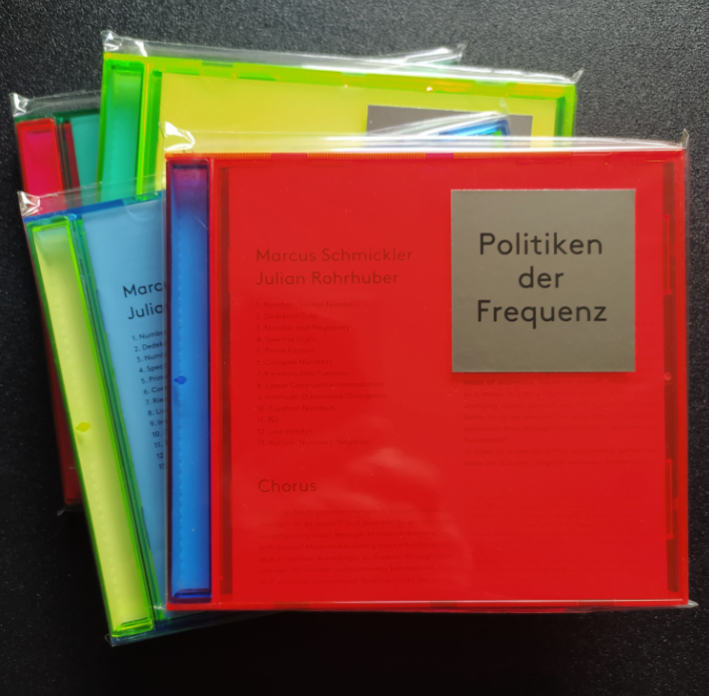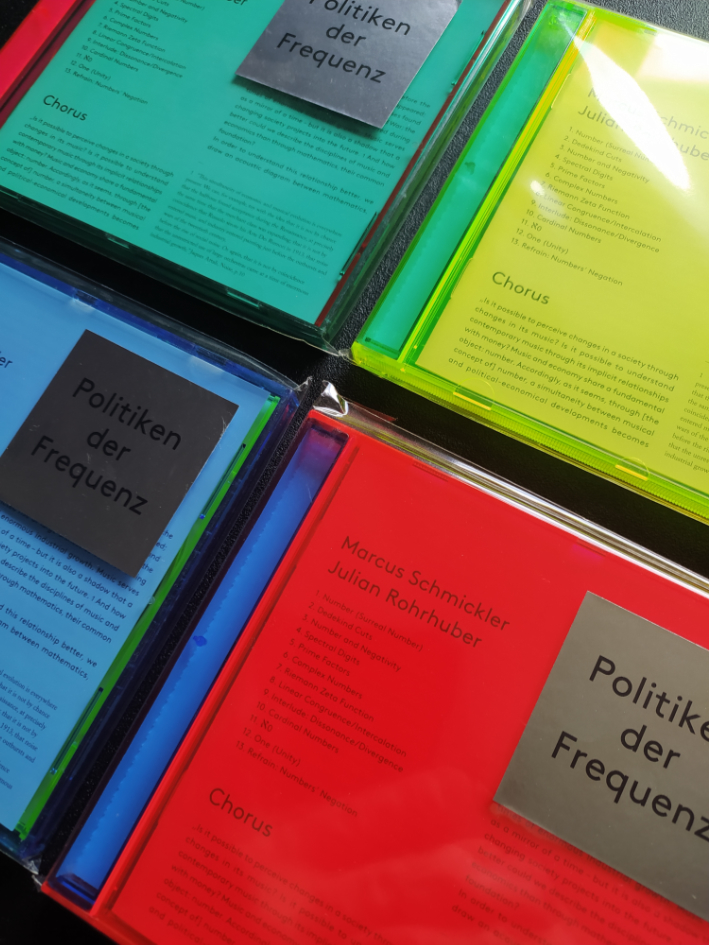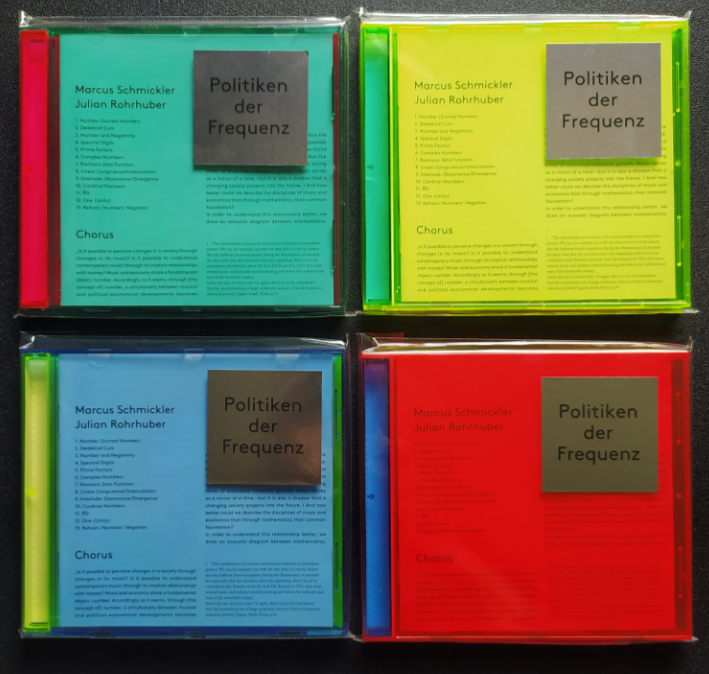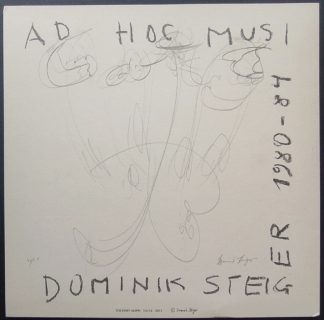Description
Tochnit Aleph TA115
“Now this is interesting – one of the most unusual projects to have emerged on Editions Mego for a while. Markus Schmickler is better known for his electronic output as Pluramon, while Julian Rohrhuber is a Professor of Music Informatics and Media Theory at the Robert-Schumann Hochschule in Düsseldorf. Politken der Frequenz (‘Politics of Frequency’) draws on concepts from economics and advanced mathematics, including the work of contemporary philosopher Alain Badiou, for a literal sonification of cutting-edge theory and the abstractions of the modern world. It involves clouds of data rendered in the primary colours of electronic synthesis alongside a chorus that chants numbers, argues points and asks ‘Is it possible to perceive changes in a society through changes in its music? Is it possible to understand contemporary music through its implicit relationship with money?’ The result is like a cross between reading a new manifesto and what Xenakis might have produced had he lived to be angry about the financial crisis. A must for readers of Badiou or Attali, Schmickler and Rohrhuber seem to have tapped into the very life of numbers and liquid cashflow itself.” – Review from Boomkat
Following a hypothesis according to which “Music and Economics share a fundamental object: number,” Marcus Schmickler and Julian Rohrhuber’s project Politiken der Frequenz circles around the acoustic rendering of number concepts. Inspired by Alain Badiou’s Le Nombre et les Nombres, and accompanied by mixed choir, the piece attempts to question the apparent immediacy of numbers that allows calculation to govern today’s economy, social sciences and everyday life. “Change, flexibility, and movement are considered desirable today, while the static, rigid, and unchanging tends to be met with reservation or is implicitly opposed. Movement, perhaps even chaotic movement, or some form of change of the change of the change, appears promising: it suggests the invention of the new, rather than the discovery of the already-there, it is taken as the core of the revolutionary, or at least of the progressive. The unchanging, then, is only a brittle ladder to be used and then thrown away, a dead tool that merely points to life, or even a conservative prison of standardization. By consequence, what seems to exist in movement and nothing more, indeed appears in a favorable light: sound. Be that as it may, such a positive evaluation of the potential of change mirrors a contemporary economic understanding of change and/or growth, where it is precisely what constitutes value as such. For algorithmic trading, success means the appropriate bet on a trend, for the employer, flexibilization and casualization of labor. And even though the appropriation of change as surplus value implies the arrest of its movement, this capture is only an intermediate unproductive precondition of investment in the expected dynamical behavior of free agents. The commenting chorus in Politiken der Frequenz (trans. “Politics of Frequency”) is an attempt at exposing this mutual ideological support, by introducing a third element, namely the concept of number. A number and its properties can be considered either as an outcome of a dynamic process, like measurement or counting, or (and) as something that exists independently, and is a precondition necessary for such operations in the first place. From both perspectives, however, the numerical is outside the frame of variation, something unchanging and infinitely resistant. It is in this role that it can serve as a middle and common ground of sound and economy, excluded, but necessary as a mere tool applied to provide external stabilization. What if number is taken as an object of investigation instead, an object of sound, one of mathematics? Can there be an alternative to the eternalized value of change, an alternative to the false dialectics of movement and arrest? Certainly, drawing from the history of mathematics, a sonification of number brings to light something fundamentally different, namely its acoustic shimmer, its glint.” Another version of the piece was commissioned by WDR3 Studio Akustische Kunst. Premiered November 2011.
A joint release between Editions Mego & Tochnit Aleph.






